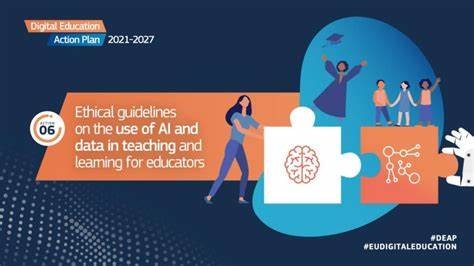
The integration of Artificial Intelligence into educational systems, from K-12 classrooms to professional development platforms, promises transformative benefits: personalized learning paths, intelligent tutoring, automated grading, and data-driven insights into student performance. This technological revolution holds the potential to democratize access to quality education, streamline administrative tasks, and fundamentally reshape how we teach and learn. However, like any powerful technology, AI in education is not without its complexities and significant ethical considerations. As educators, administrators, technologists, and policymakers, we are tasked with the critical responsibility of navigating these ethical waters, ensuring that AI serves as a tool for empowerment and equity, rather than inadvertently perpetuating biases, compromising privacy, or diminishing the human element crucial to effective pedagogy.
One of the foremost ethical concerns revolves around data privacy and security. AI systems in education thrive on data – information about student performance, learning styles, engagement levels, and even biometric data in some proctoring scenarios. While this data is invaluable for personalizing learning, its collection, storage, and utilization raise profound questions. Who owns this data? How is it secured against breaches? For how long is it retained, and for what purposes beyond the immediate educational context? The sensitive nature of student data, particularly for minors, demands the highest standards of protection. Educational institutions must implement robust data governance frameworks, ensure compliance with evolving privacy regulations like GDPR and FERPA, and be transparent with students and parents about what data is collected and how it is used. Without stringent safeguards, the promise of personalized learning could be overshadowed by fears of surveillance or the misuse of personal information, potentially leading to a chilling effect on engagement.
Another significant ethical challenge lies in the potential for algorithmic bias. AI systems learn from the data they are fed, and if that data reflects existing societal inequalities or stereotypes, the AI can inadvertently perpetuate or even amplify those biases. For instance, an AI tutor trained predominantly on data from a specific demographic might struggle to effectively adapt to the learning styles or cultural contexts of students from underrepresented groups. Similarly, AI-powered assessment tools could inadvertently penalize certain accents in speech recognition, or misinterpret non-standard written responses, leading to inequitable outcomes. The consequences of biased AI in education are profound: they can widen achievement gaps, unfairly disadvantage certain student populations, and ultimately reinforce systemic inequalities. To mitigate this, developers and implementers of AI in education must prioritize diverse and representative datasets, conduct rigorous bias testing, and build in mechanisms for human oversight and intervention to correct algorithmic errors.
The question of autonomy and the “black box” nature of some AI algorithms also presents an ethical dilemma. As AI systems become more sophisticated, their decision-making processes can become opaque, making it difficult to understand why a particular recommendation was made or how a specific assessment score was generated. This lack of transparency can erode trust and make it challenging for students, parents, or even educators to challenge an AI’s output. Furthermore, an over-reliance on AI-driven recommendations could potentially diminish student agency, steering them along pre-determined paths rather than allowing for genuine exploration and independent decision-making. Ethical deployment requires transparency wherever possible, explaining the rationale behind AI decisions, and ensuring that students always retain the ultimate control over their learning journey.
Beyond these immediate concerns, there is a broader philosophical debate about the appropriate role of AI in the human endeavor of education. While AI can personalize content and automate tasks, it cannot replicate the nuanced empathy, critical thinking cultivation, and socio-emotional development that a skilled human educator provides. There is a risk that an overemphasis on AI tools could de-emphasize the vital interpersonal connections between students and teachers, or between students themselves, which are fundamental to holistic development. Ethical considerations must guide us to view AI as an augmentative tool for educators, enhancing their capabilities and freeing them from tedious tasks, rather than a replacement for the invaluable human connection in the learning process. The goal should be to leverage AI to make teachers more effective, not to make them obsolete.
Finally, ensuring equitable access to AI-powered educational tools is a pressing ethical imperative. If advanced AI learning platforms are only available to affluent schools or well-funded institutions, it risks exacerbating the digital divide and creating a two-tiered educational system where some students benefit from cutting-edge personalization while others are left behind. Governments, educational organizations, and technology companies must collaborate to develop strategies that ensure these powerful tools are accessible to all learners, regardless of their socio-economic background or geographic location. This might involve public-private partnerships, open-source initiatives, or funding models that prioritize equitable deployment.
In conclusion, the ethical integration of AI into education is a complex, ongoing conversation that demands foresight, collaboration, and a deep commitment to student well-being and equity. By proactively addressing concerns related to data privacy, algorithmic bias, transparency, human-AI collaboration, and equitable access, we can harness AI’s immense potential to create more effective, engaging, and personalized learning experiences for all. The ethical choices we make today will shape not only the future of education but also the very fabric of our increasingly AI-driven society.